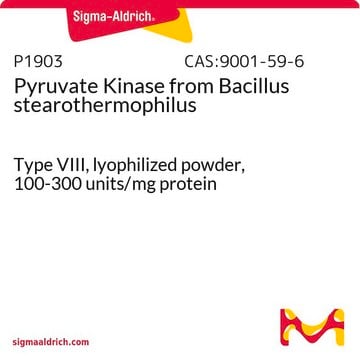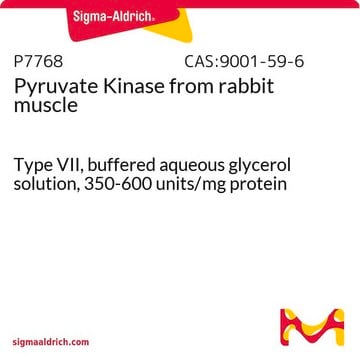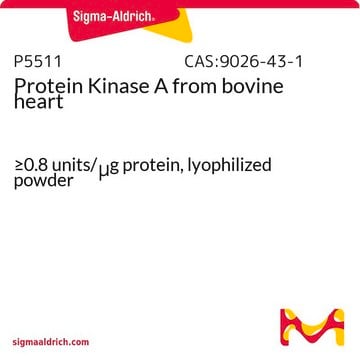P2014
Phosphorylase Kinase from rabbit muscle
lyophilized powder, ≥60 units/mg protein
Synonym(s):
ATP:phosphorylase-b phosphotransferase, Dephosphophosphorylase kinase
About This Item
Recommended Products
form
lyophilized powder
specific activity
≥60 units/mg protein
composition
Protein, 20-40% biuret
foreign activity
ATPase ≤0.5%
phosphorylase a ≤1%
phosphorylase b ≤5%
Storage temp.
−20°C
General description
Application
Unit Definition
Physical form
Storage Class
11 - Combustible Solids
wgk_germany
WGK 3
flash_point_f
Not applicable
flash_point_c
Not applicable
ppe
Eyeshields, Gloves, type N95 (US)
Choose from one of the most recent versions:
Certificates of Analysis (COA)
Don't see the Right Version?
If you require a particular version, you can look up a specific certificate by the Lot or Batch number.
Already Own This Product?
Find documentation for the products that you have recently purchased in the Document Library.
Active Filters
Our team of scientists has experience in all areas of research including Life Science, Material Science, Chemical Synthesis, Chromatography, Analytical and many others.
Contact Technical Service







